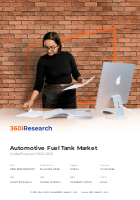
Automotive Fuel Tank Market by Material Type (Metal, Plastic), Component (Baffles, Fuel Cap, Fuel Filler Neck), Fuel Type, Manufacturing Process, Capacity, Vehicle Type, End Use, Sales Channel - Global Forecast 2025-2030
SKU
MRR-3D2FD205C371
Region
Global
Publication Date
December 2025
Delivery
Immediate
2024
USD 17.63 billion
2025
USD 18.51 billion
2030
USD 23.83 billion
CAGR
5.14%

Download a Free PDF
Get a sneak peek into the valuable insights and in-depth analysis featured in our comprehensive automotive fuel tank market report. Download now to stay ahead in the industry! Need more tailored information? Ketan is here to help you find exactly what you need.



